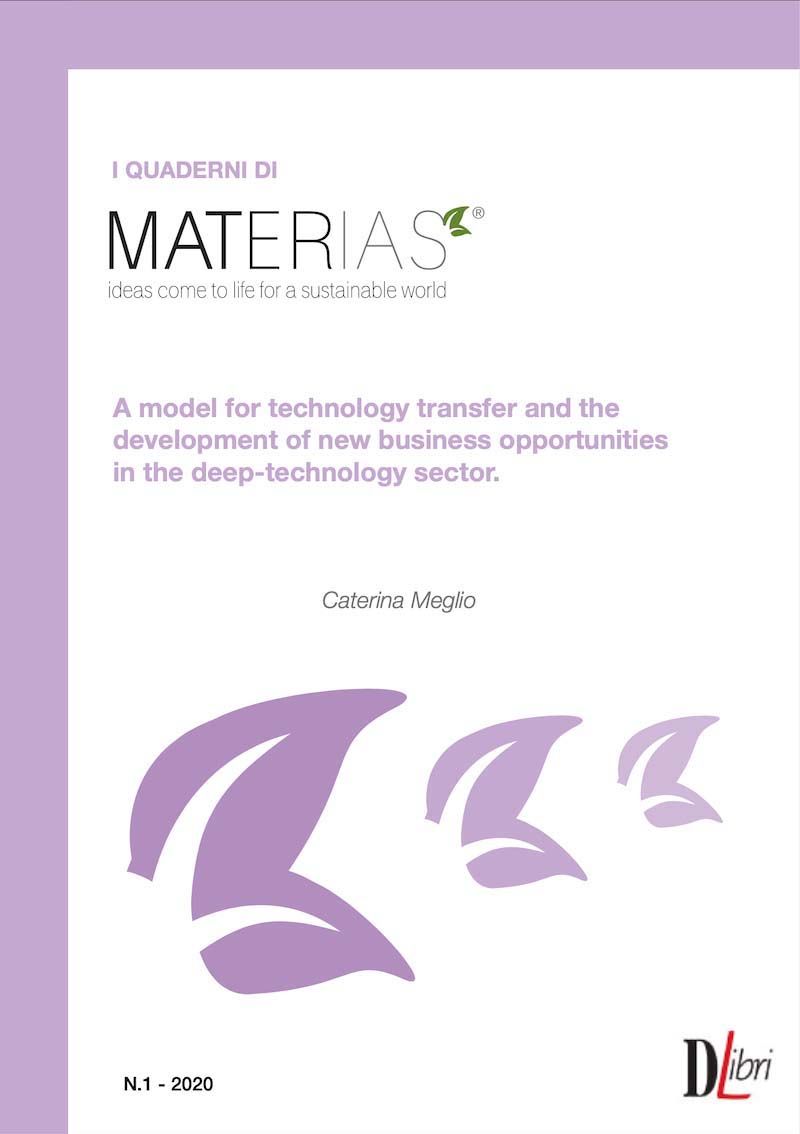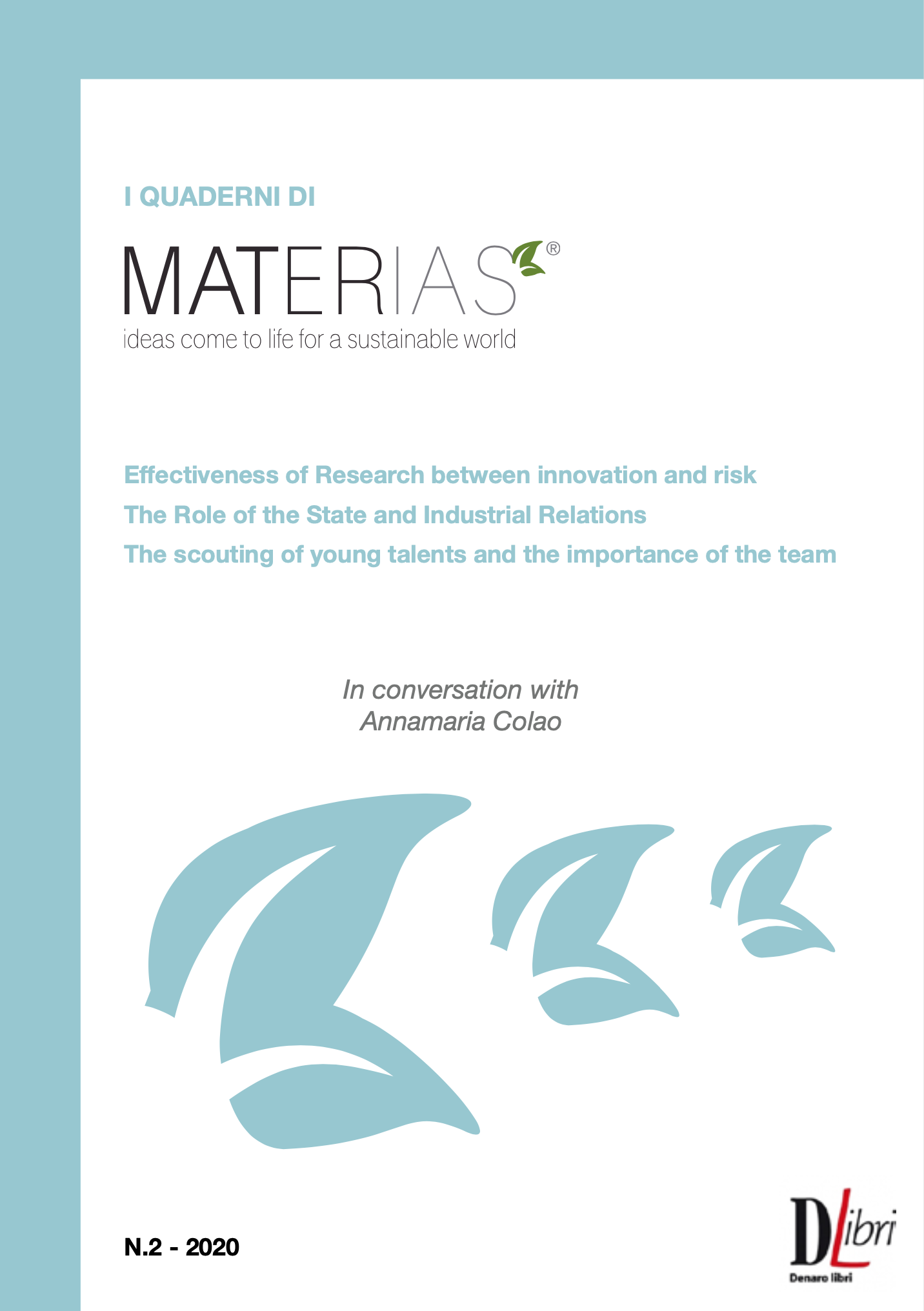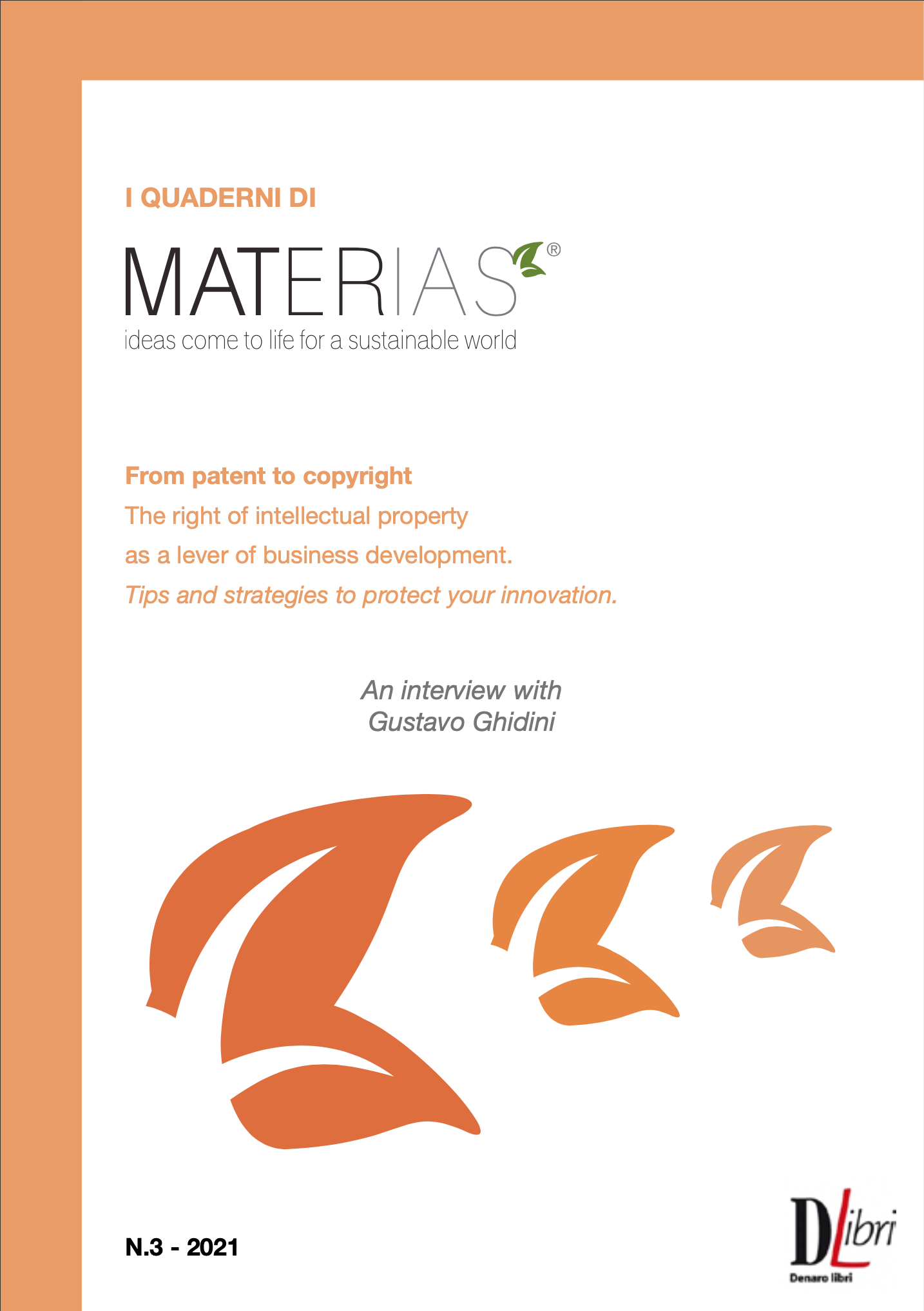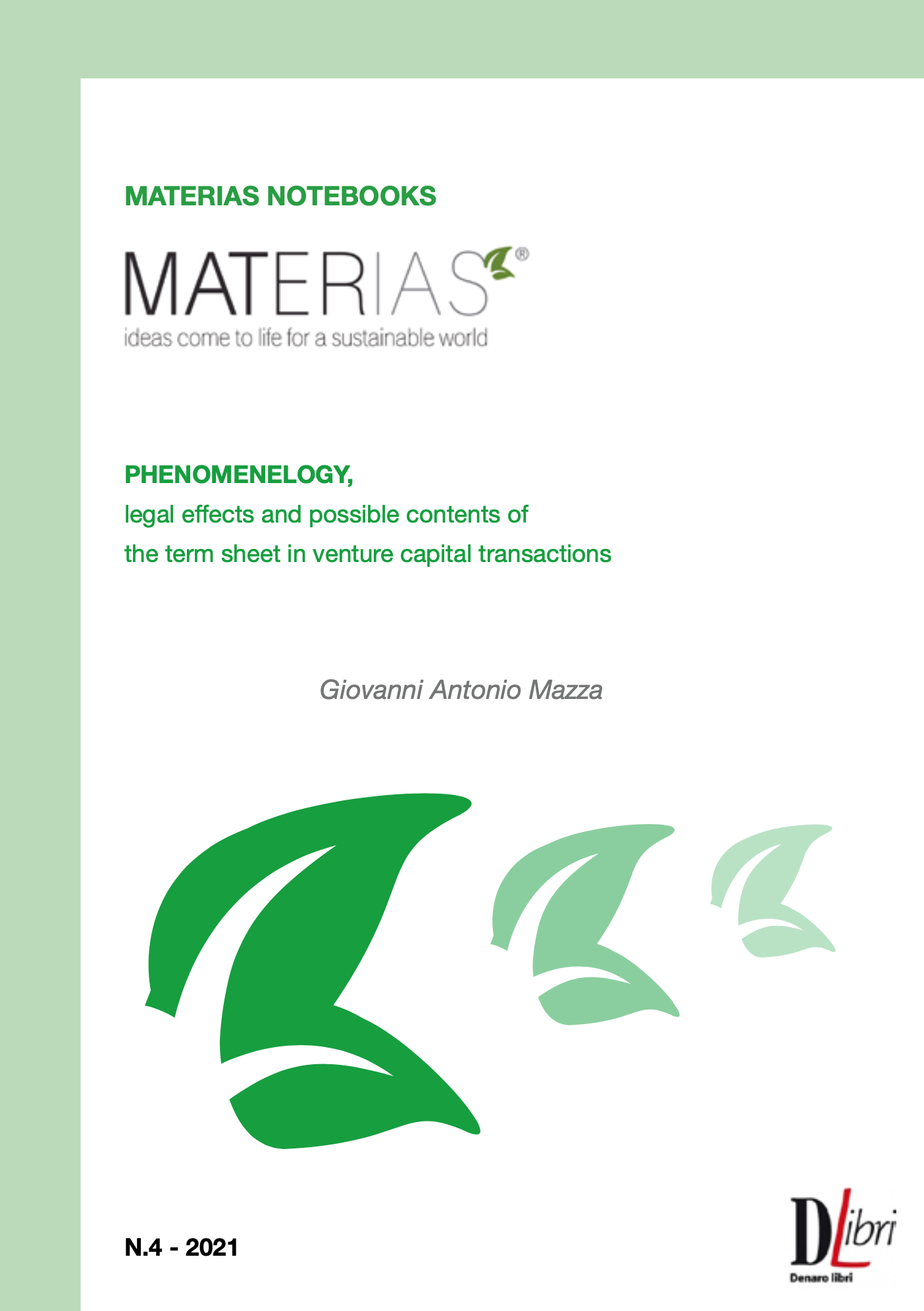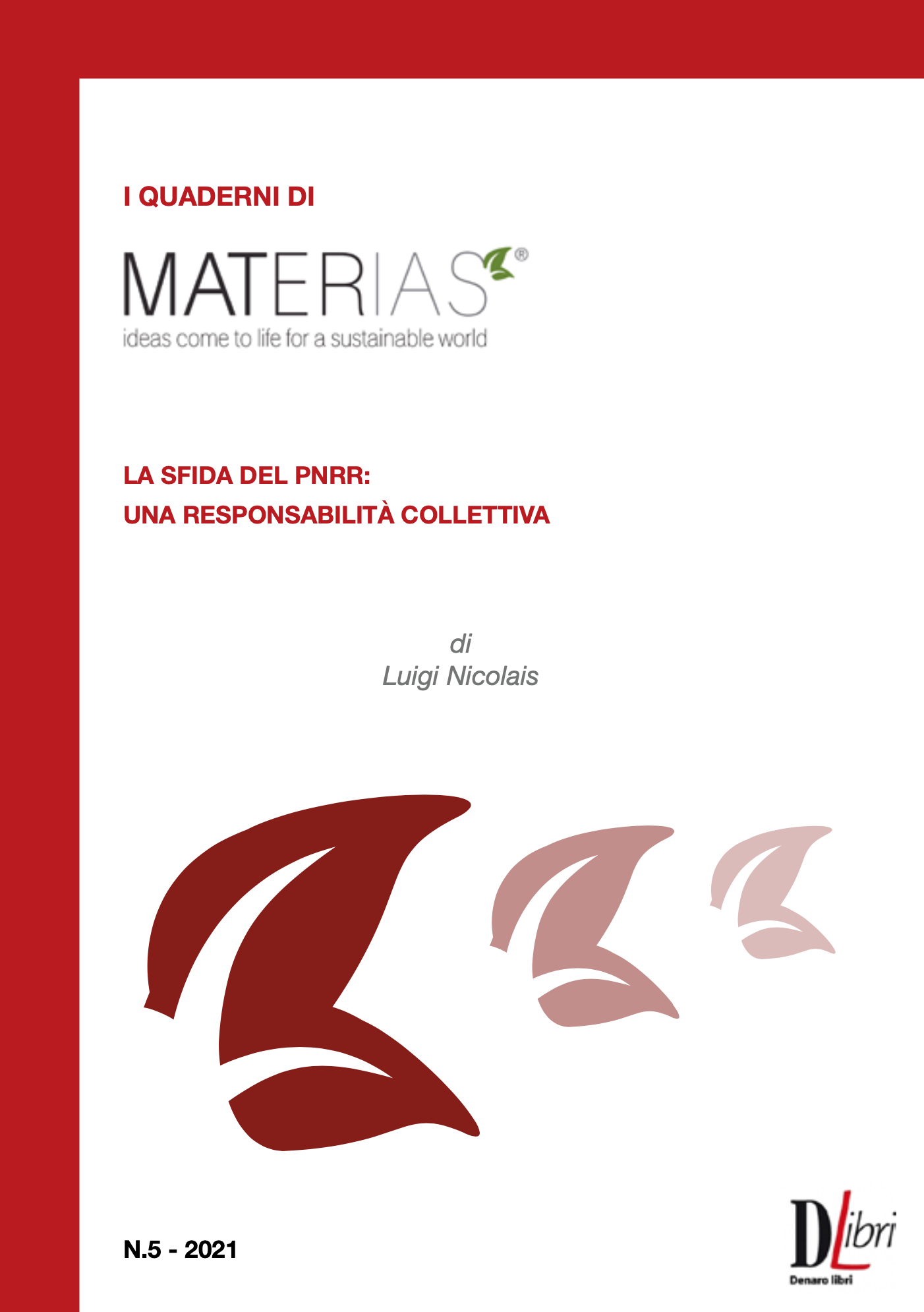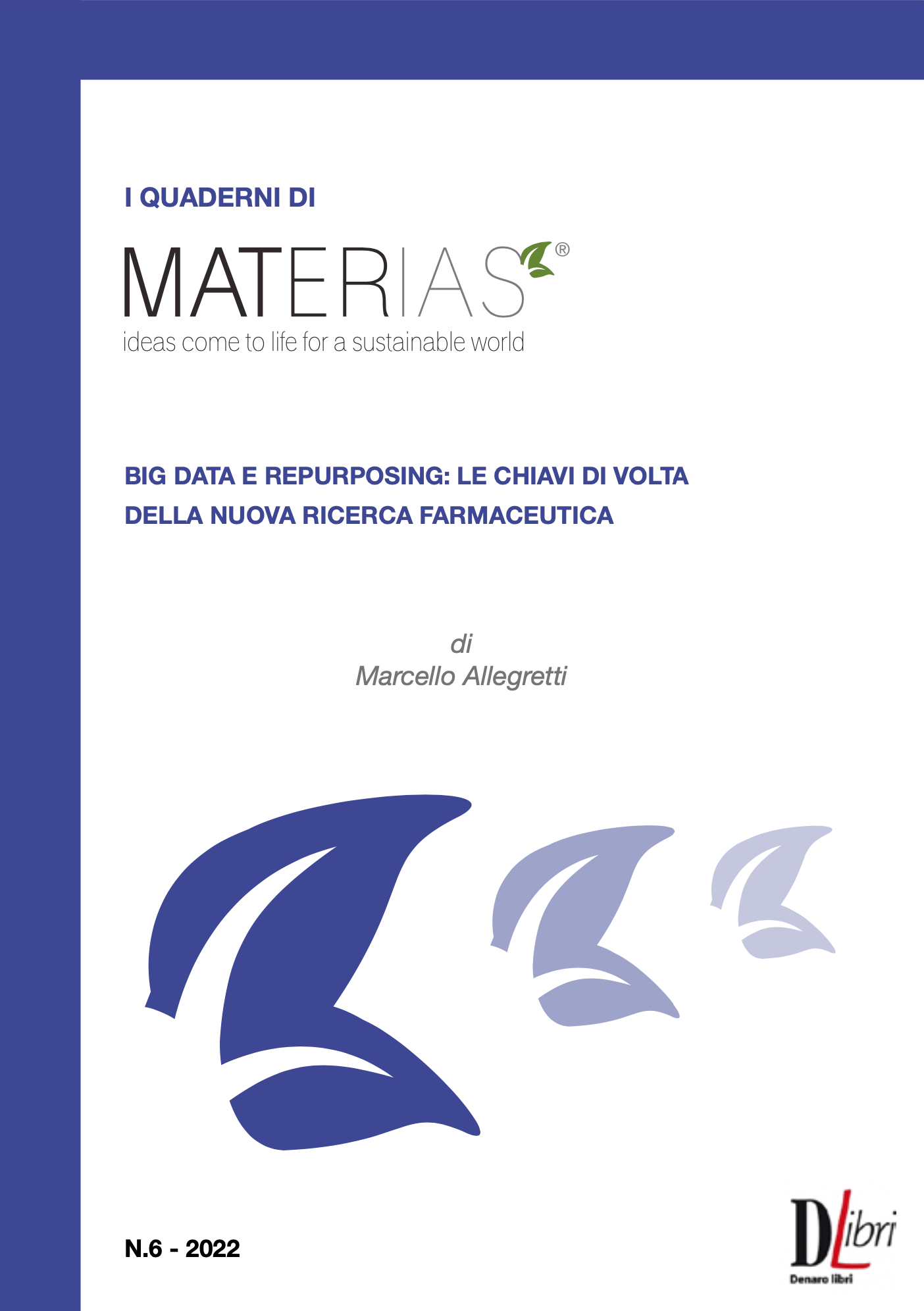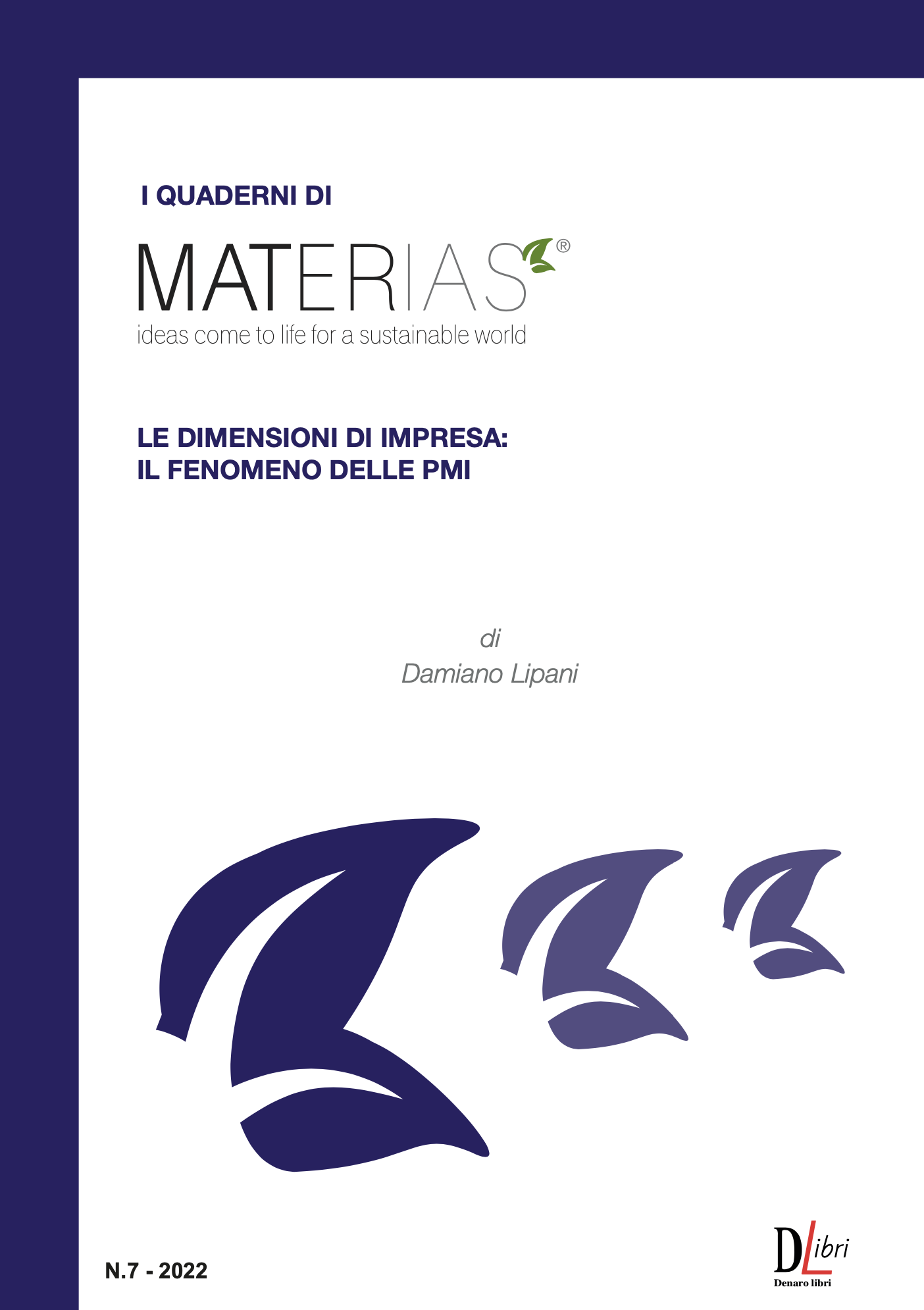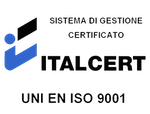N° 1
MATERIAS NOTEBOOKS
A model for technology transfer and the development of new business opportunities in the deep-technology sector
Caterina Meglio
CEO of MATERIAS
10 - 07 - 2020
ISBN: 9788899620035

Luigi Nicolais, President and founder of Materias
Innovation is at the heart of the value generation model. With this mission, Materias supports the idea and the inventor to develop innovative technologies and cross the death valley creating new business opportunities where the system of knowledge production often consider only research and scientific publications.
With the Notebooks, the series of which we inaugurate with this issue, we intend to illuminate a beacon on innovation in the various applications of the advanced materials that Materias, as a privileged observer, make available to stakeholders who work in the enhancement of research.
A contribution that starts from research but becomes technological innovation and tells the challenges that a "technology" must face in Death Valley during its transformation process into a "product" ready to the market: identification and dialogue with an investor, intellectual property, regulatory analysis, industrial production and relationship with the financial system.
All this is part of the new framework program for Research and Innovation, Horizon Europe by which Europe has strongly promoted the birth of the European Innovation Council (EIC) as a line of action capable of generating tools to support ideas and technologies capable of creating new markets, generating new jobs, growth and prosperity in Europe.
The European program supports small and medium-sized enterprises and start-ups with innovative and highly risky ideas, willing to develop and sell products, services and business models aimed at fostering economic growth. Furthermore, the objective of the EIC is to grow the most promising SMEs through mentoring, coaching, strategic consulting, networking opportunities and substantial financial investments.
Even with its Notebooks, which become a new tool at the service of the strategy of growth through innovation, Materias intends to present itself with ever greater conviction as a determined and proactive actor in the relaunch of the country with its best scientific and entrepreneurial energies.
In recent years, the start-up sector has grown exponentially. Today, innovative start-ups represent a significant part of economic and social development in many countries. From this scenario starts the interest of the academic world and policymakers in the creation and competitiveness of new businesses and innovative start-up.
The discipline of this particular form of a joint-stock company is relatively recent and was born within the "Europe 2020" growth strategy, adopted by the European Union in 2010 in order to face the economic crisis on the one hand and, on the other, to win the global challenges of technological innovation of SMEs. For this reason, start-ups have become a key factor in local development and the most common mechanism of technology transfer.
Today they represent 0.42% of the one and a half million active Italian companies, and their total share capital is approximately 351.2 million euros. In the life cycle of the company, start-ups represent a very delicate and crucial moment (Fedele, 2015).
In this phase, the companies define the organizational design (Van de Ven et al. 1984), the new routines (Cassar, 2014) and the management of strategic skills (Mets, 2018). Furthermore, although scientific production in Italy ranks at the top of world rankings, the industrial impact on the country's competitiveness system and the transfer of research results are not among the best and promising.
It is important to highlight how the low propensity to finance research in our country has always represented an "expense" and not an "investment". It follows that the R&I sector, both public and private, employs only about 250,000 people, a number too low when compared with the average of other European countries. In Italy, in fact, researchers represent 0.4% of the total employed, compared to a European average of 0.7% (ISTAT, 2018).
In this context, start-ups are considered an important factor of economic innovation and a relevant actor of social change. In fact, a national and international "ecosystem of start-ups" is currently being consolidated, made up of new businesses, investors, traditional credit operators, venture capital, private equity funds, business angels and business facilitators (academic and private incubators, business accelerators, technology parks, co-working initiatives).
Despite this growing interest, many start-ups fail shortly after their birth. The survival rate certainly depends on many factors, not least one of the reason is linked to the ecosystem that hosts them, to the point that someone compares them to the birth and the development of a new plant in a rainforest (Horowitt and Hwang, 2012).
Although the evolutionary theory of the firm holds that selection mechanisms are a necessary phenomenon (Aldrich, 1999) and that the failure of new firms is a physiological event (Watson et al., 1998; Zacharakis et al., 1999), many scholars in the literature argue the existence of theoretical reasons for supporting innovative start-ups and for the existence of support structures such as certified business incubators.
According to this literature, startups in the early stages of their lives would operate in an environment of "market failures", which would prevent situations to achieve social efficiency in the absence of public intervention.
Such failures are often linked to the difficulty that start-ups may encounter in accessing particularly relevant inputs, such as financial resources, knowledge, technology and networks of relationships, crucial factors for growth and development (Storey and Tether, 1998; Colombo and Delmastro, 2002).
On the other hand, despite the efforts of recent years, there is a clear lack of propensity for venture capital investments in the world of research. In fact, the intervention of venture capital and investment funds represents a financial leverage that would make the system much more competitive globally.
The investment of venture capital in innovative start-up promotes highly qualified job opportunities for young people and raises their level of industrial development. Obviously, the risks that venture capital investors take on are very high, especially for the so-called deep-tech innovations, ie those with high scientific and technological impact where public funding is essential to cross the so-called “death valley”.
This status refers to the early stages of technological development, in particular, it represents the moment in which many resources are needed to develop the “proof of concept” to bring to the market once developed and enhanced.
Recognizing this problem, the European Commission has decided to intervene with public resources through various measures, the most important of which is to be traced back to the establishment of the European Innovation Council.
The death valley is not just a funding gap but often represents a "failed" communication between investors and researchers. Therefore, the innovation process fueled by start-ups is probably one of the most intriguing characteristics and at the same time one of the most difficult challenges that contemporary economies can face.
Precisely because they represent the main means of enhancing the research and not the goal, about 90% of start-ups do not survive the period between the first capital contribution and the first period that generates revenue because:
- fails to focus on scientific and technological solutions and pays little attention to “what the markets really want”;
- does not have multidisciplinary skills that need to be mastered to create a successful start-up: economic, scientific, managerial, commercial skills;
- lack of investment in the development phase (low TRL);
- is unable to fit into a favourable context of industrial partners, customers and investors.
The threatening data mentioned above fuel a strong risk aversion in the industrial and corporate world towards investments that may not be profitable. The limited skills of investors further compromise the willingness to invest concerning a correct evaluation of innovative solutions.
In fact, investors often do not have multidisciplinary skills adequate to those required by innovative start-ups. The great complexity of the interaction is amplified due to the absence of a bridge of dialogue and trust between companies and the innovation ecosystem.
Materias is part of this scenario, an ecosystem of research districts and shared knowledge pursuing a strategic role of connection between the world of research and the industrial "corporate" sector, which aims to create new science-based companies, supporting the development of innovative solutions in the advanced materials field and accelerating their market entry. It is an innovative model in support of research development policies in Italy that gave impulse to the building of an innovative ecosystem that has allowed it to come into contact with scientific excellence structures, both public and private, national and international markets, in order to make a decisive contribution to the development of technologies, by defining a strategy aimed at overcoming procedural obstacles and critical issues. Materias is helping to create a learning environment aimed at improving employability, entrepreneurship and technology transfer, through the application of the best international training practices and experiences.
The presence of local partners has made it possible to establish an international center for innovation aimed at favoring the transfer of technology which is fundamental to contribute to social well-being and also stimulates the regeneration of local districts. The formula of the technological innovation center represents a unique best practice in the European context in the field of advanced materials and cultural innovation through the circulation of energies, activating a proactive dialogue and offering shared cultural, social and entrepreneurial experiences in the name of sustainability. An innovation center with strong territorial roots, but also visionary and open to the world (and its inspirations and innovations) which, supporting young people and their ideas, has been able to transform innovation into an experience of growth and a reference for the whole national territory. The strategic objectives are achieved through processes with a high immaterial value that is based on the knowledge economy and sustainable capacity. This strategic line is capable of encouraging the development of a territorial reality with a high intensity of knowledge-based economy production and innovation. The strategy has been developed in order to encourage the process of building and transmitting innovation and culture considered by Materias as significant identity assets, involving all the ecosystem stakeholders through the VALUE method. According to this vision, the 33 partners of Materias (Universities and Research Centers) are working as laboratories where to experiment more sustainable development models and frameworks that increase bottom-up participation; promoting the awareness to pursue the macro-objectives of community policies with the direct involvement of the territories and their citizens. Culture and innovation are therefore the keystone of a sustainable and smart development. For this reason it is necessary to develop the ability to build solid and circular economies by rooting skills and resources in the economic and social fabric, encouraging learning through an innovative key in order to increase international attractiveness and competitiveness. Materias has a competitive advantage based on 5 proprietary assets:
- Team.
The Materias team is made up of people who come from academia and business, with extensive experience in scientific research on advanced materials, management and protection of intellectual property. These features allow the team to have solid know-how on issues necessary for the development of new ideas and new businesses. A competitive advantage that allows the team to overcome the risk deriving from a limited attention only to the entrepreneurial and scientific aspects deriving from the absence of a strategic vision of the market. - Network & Partnership.
Materias can count on a wide network of collaborations with universities, companies and consulting companies operating in the research and development sector. This competitive advantage allows Materias to have a unique knowledge of market needs and scientific development, directly from the point of view of the experts. - The Materias database .
The database is powered by the screening and scouting of ideas and projects from the academic, private and business world. The data relating to the technologies identify the characteristics of the idea / project, the status of intellectual property and potential application sectors. - Translational Laboratory.
Materias manages and supervises virtual laboratories, equipped with adequate tools for the development and validation of the technologies conceived and located in the research centers that collaborate with Materias. It is a model capable of guiding research towards an innovation ready to be presented to companies. - Patent portfolio.
The patent portfolio is the set of patents developed, managed, and owned by Materias. The Intellectual property provides a competitive advantage for the use of specific technologies and constitutes, through the sale of licenses or royalties, one of the income mechanisms characterizing the Materias business model.
The value generation model has three phases: Scouting, InCoMing, Acceleration. In the Scouting phase, the model provides for the identification, screening and evaluation of ideas with a high technological value supported by the four fundamental pillars of cultural innovation: sustainability, research, vision, innovation. In the Scouting phase, the model provides for the identification and screening and evaluation of high-tech ideas promoted by the academic sector and the world of research. This action produces a first selection of innovative solutions and science-based ideas suitable to be valued and ready to market.
In the InCoMing phase - Incubation, Coworking and Merging - the enhancement of ideas continues through technical-scientific evaluations, technological validations, intellectual property analysis, cross-fertilization actions and development of prototypes for the creation of a " proof of concept ". This phase leads to a further selection of patent solutions already technologically validated with the identification of development teams and addressing the industrial acceleration.
In the final phase of Acceleration, solutions are refined in relation to market needs through the development of specific business models and the validation of prototypes. The acceleration phase is characterized by consulting services on the feasibility of the business idea, economic sustainability, and future profitability. However, it can also cover topics such as market analysis, competitors and information on taxation, bureaucracy and access to credit.. The main reference document, drafted during the acceleration phase, is the business plan, which consists in the formalization of the business idea. Specifically, the business plan consists of two parts: the first descriptive, sometimes defined qualitative, providing a technical analysis of the offer that the company intends to propose, the demand it aims to satisfy, the strategies to be implemented, the organization and the management team. The second part of the business plan is more analytical, contains economic-financial data and is also defined as quantitative, examining the planned investments, the economic structure and the financial situation.
The development of the business proposal through the drafting of a business plan is a step that allows to verify the plausibility of industrial development. The development of the business proposal through the drafting of a business plan is a step that allows you to verify the effectiveness of the industrial development of the idea. Finally, the business plan provides the management team with a point of reference for analyzing company performance and making strategic choices in order to assess whether the objectives have been achieved or not. Often the innovators are scientists, technicians or computer scientists with little preparation in economic-business matters.
In these cases, the role of Materias in supporting the potential entrepreneur can prove to be not only useful, but also decisive for the establishment of the company.
Finally, Materias defines the "exit strategy" as an objective to be pursued when the investment is undertaken (Arienti, 2014). It is particularly interesting in this context to report the outcome of a study conducted by Cumming and MacIntosh, concerning 248 "exit" strategies carried out between Canada and the United States. The purpose of the analysis was to evaluate the differences found between a total "exit", in the sense of the overall sale of the business, and a partial one. The direct relationship between partial “exits” and the quality of the companies involved was highlighted, in addition to the fact that usually merger and partnership strategies concern companies operating in the technology sector, characterized by a high rate of innovation. It is essential to underline the creation of vehicle companies as the best form for the financing of innovative start-ups in the first and subsequent stages of their evolution (Popov and Roosenboom, 2012). This is because, unlike the loan granted by banks (loan that takes the form of debt capital), the loan provided by the incubator who becomes a partner in the start-up usually consists of a stake in risk capital. It is evident that in the initial phase of the life cycle, companies usually have negative cash flows and encounter difficulties in obtaining financing from conventional entities such as banks. Furthermore, venture capital financing includes, depending on the case, an active participation by the investor and in the management of the final company precisely because he is interested in protecting his investment and being part of it (Popov and Roosenboom, 2012). This type of participation allows the incubator to obtain, in return for the invested resources, minority or majority shares (depending on the case) of the financed companies and making a profit when, following the increase in the value of the financed company, are preparing to sell the shares held.
Through the execution of its model, and in particular in the phase of promotion and enhancement of innovative technologies, Materias provides services, both in the start-up phase and in the acceleration phase. The management services (support and coordination) for start-ups concern: the identification and presentation of potential investors, the definition of strategic objectives in economic, industrial and governance terms, assistance in the start-up of transactions with potential financial partners. Furthermore, Materias is able to support deep tech start-ups in the coordination and management of technical-scientific activities.
These services concern various aspects and in particular, in an early stage phase, they are represented by the preliminary analysis in which the essential points of the project are identified in order to evaluate the opportunity to establish an Innovative Start-up, from the constitution process, the management of intellectual property in support of the filing phase of the patent application, to the possible contribution of financial resources necessary for business development. Furthermore, in the process of promoting and enhancing the technology, Materias can provide the following specialist advisory services such as Management Services or Procurement Services.
Management Services:
- reporting and presentation of potential investors;
- defining strategic objectives in economic, industrial and governance terms;
- supporting the management of the relationship with potential financial partners and the negotiation of the conditions of the transactions, supporting the start-up in drafting the dossiers and documents for its finalization; assisting in the preparation of the marketing plan;
- supporting the coordination and management of technical and scientific areas;
- supporting in the administrative and technical-scientific management phase of research and innovation projects.
Procurement Services:
- information on funding opportunities for research and development projects in the areas of interest of the start-up;
- identification of potential partners in order to identify the team that can formulate the application for admission for funding;
- evaluation of the proposals of third parties in order to include the start-up in a partnership agreement;
- supporting in the definition of the project idea and the general design of the project, as well as the expected results, impact and benefits.
The first Materias startup, based on the service agreement model, is called Etesias and deals with 3D PRINTING for concrete.
The technology revolutionizes the classic approach to the production of precast reinforced concrete, allowing a greater versatility in the implementation of complex interventions, reducing the environmental impact and optimizing the costs.
Many industrial sectors are undergoing a strong phase of renewal thanks to the media impact of the European "Industry 4.0" strategy and the introduction of innovative technologies that are revolutionizing the way in which objects are made, manufactured and used.
However, nothing similar has happened to the concrete industry, leaving production techniques unchanged for over 50 years.
In fact, the technologies currently available for the construction of precast concrete elements have not changed over time.
In those cases, the costs associated with the construction and assembly of formwork are very high (even more than 50% of the structure itself) as well as the time and energy associated with manpower.
In this context, through a breakthrough technology, Etesias technology was born from a research and development activity conducted in the laboratories of the University of Naples Federico II and the University of Pavia.
The development of the technology subsequently underwent a significant acceleration thanks to the contribution of Materias whose role was crucial to target the development of the idea, born in the context of a university research, at a higher stage of technological development (TRL between 6 and 7), supporting the patenting and promoting the establishment of Etesias, 50% owned by Materias and 50% by the researchers holding the patents.
ETESIAS is the holder of a patent granted at national and European level (IT102016000077424 and EP17751849.5) and holder of patent applications for Canada and the USA that protect the ownership of the technology for manufacturing reinforced concrete products, through the 3D printing of segments in concrete and assembly with suitably anchored steel elements.
In addition, a further patent application has been filed (IT102019000006300) which protects the property of a connection technology between the printed concrete layers, through mechanical systems that make the individual artifacts with higher mechanical performance than those obtainable with traditional 3D printing technologies.
The most significant prototype of the technology is represented by an arched beam in reinforced concrete. about 4 meters long, whose articulated shape recalls the profile of Vesuvius (in memory of the geographical context in which the technology was born) with mechanical performance equivalent to that of a beam made with conventional procedures, but with a weight reduced by about 50% .
The designed assembly system consists of threaded steel bars hooked to the outside of the molded segments with a quick and effective process. Compared to the technologies currently available for the construction of prefabricated elements in reinforced concrete, the innovative character of the construction methods of this prototype lies in the use of 3D printing for the construction of load-bearing construction elements (e.g. beams) with variable section and profile, characterized by a series of voids that optimize the mechanical performance with a much lower weight and therefore with a lower environmental impact than conventional technologies. Furthermore, the innovative nature of the manufacturing methods of these prototypes allows to achieve the following purposes:
- Productivity increase of 70% compared to the current prefabricated production systems, reduction of pollution (at least 50%) and less waste production (30%) through the lower use of concrete and the absence of formwork;
- Reduction in the use of raw materials (50%) and energy (30%) with the same mechanical performance;
- Development of smart and customizable prefabricated structural elements exploiting the potential of the technology.
A further contribution to the development of ETESIAS was certainly given by the partnership with the company Italcementi S.p.A. (HeildebergCement group), a company that operates in the field of production and marketing of types of cement and other building materials and possesses a very high technical and scientific knowledge in this field.
The business idea of ETESIAS was awarded with the "Campania Digital Innovation Hub" Prize of € 40,000, and was ranked first in the category "New Business Ideas in Industry 4.0", as part of a competition held by the Digital Innovation Hub of the Campania Region for the promotion and selection of entrepreneurial ideas and / or innovative projects.
The ETESIAS business model was also awarded with a Seal of Excellence certificate issued by the European Commission, following a feasibility study proposal submitted in response to the “H2020-SME instrument phase 1” call.
The proposal received an over-threshold evaluation, but not eligible for financing due to lack of funds.
Finally, ETESIAS won a Smart & Start Italy project, managed by Invitalia, for an investment of approximately € 400,000.
The main goal of Etesias for the near future is to standardize the innovative process developed, creating related best practices for industrial applications, through a significant increase in technical know-how and intellectual property.
The development phases planned for achieving Etesias's final goal, in agreement with Materias, are as follows:
- expansion of the pilot production plant;
- definition of standardized procedures for the production of products;
- introduction of quality control devices for objects in the printing phase;
- definition of advanced structural design procedures based on topological optimization, compatible with European structural regulatory codes;
- definition of the transportability requirements of the artifacts;
- advancement on Intellectual Property by Expanding the Patent Family.
The idea behind the business model that Materias has built with Etesias is to offer itself as a supplier of know-how to designers, construction companies and in particular producers of prefabricated elements in reinforced concrete;
The latter in particular can use the technology to activate a production line of products alternative to conventional ones, in order to obtain complex products in terms of shape, with the most advanced mechanical and environmental performance. In particular, the idea is to activate three business lines:
- Creation and marketing of prototypes for companies that require Etesias to produce a finished product, for example not achievable with conventional techniques.
- Design and technological development, for large design studios and companies, which may need to design and build load-bearing construction elements that meet requirements not achievable with commonly used technologies; Etesias provides the skills of its technical office for the creation of executive technical models, 3D modeling and product rendering, carefully following the customer's instructions.
- Licensing of intellectual property, aimed at granting manufacturers of precast elements the license to use / enhance the know-how protected by patents upon payment of a royalty. The licensing service is not limited only to the issue of authorizations for the use of the technical solution patented by Etesias, but also includes the support of the premanufactured in the phases of construction, testing and use of a system with characteristics and performances similar to that managed by Etesias , installed in the laboratories of San Giovanni a Teduccio.



